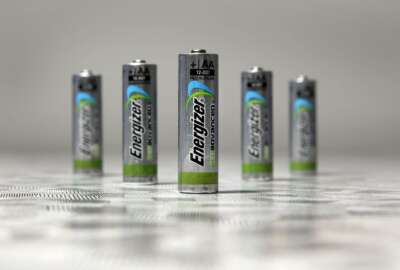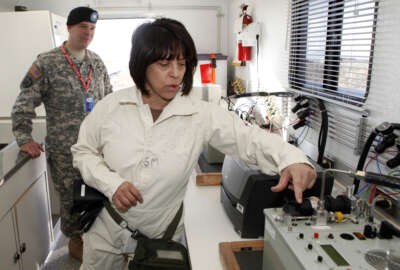
Army is working on Frankenbots with living tissue to better robot capabilities
The robots may have better stability and flexibility by taking advantage of living muscles.
The thought of living tissue and machinery meshed together brings up images of grotesque cyborgs and far-future sci-fi films, but at the Army Research Laboratory a robot with living, organic muscles may not be that far off.
ARL’s Combat Capabilities Development Command is teaming up with universities in North Carolina to develop studies in bio-hybrid robotics.
The idea is just as fantastical as you may be imagining. ARL wants to fuse living tissue with cold metal to build robots that may be able to gain the agility and versatility of living creatures.
“Bio-hybrid robotics as a field is very young,” Dean Culver, an ARL research scientist, told Federal News Network. “Today’s robot’s primary limitation is power, strength and versatility. They can perform limited tasks for a certain amount of time. But it’s not really on the order of magnitude that an organism can do the same thing. We still don’t have robots that can go into an unknown space and adapt to what they sense. These are all ultimately problems that we feel that either a bio-hybrid or a bioinspired engineering design can tackle.”
What ARL is dreaming up is growing tissue in a lab and then connecting that tissue between linkages in a robot’s joints. This technology could allow robots to be sturdier and adapt faster to terrains instead of relying on the static joints made of synthetic materials.
“One of the real advantages of muscle and the tendons and ligaments associated with the rest of the kinetic chain in organisms is that flexibility lets something go a little bit wrong,” Culver said. “There won’t be a catastrophe. I can slip and adjust a little bit and not fall down.”
The muscles can come from any animal depending on what the Army needs.
“Fly muscles, in particular, have some really desirable characteristics,” Culver said. “Using just a handful of cells to culture up a useful piece of tissue can be done with a variety of different genomes, or from a variety of different species, depending on what other kind of system level architecture you want to use.”
The Army wants the first applications of biohybrid robots to focus on the legged platforms. Right now, the Army has a Legged Locomotion and Movement Adaptation research platform that serves as a perfect example for the type of robot the service could work on.
ARL is currently finding more partners for the projects.
“At the moment, we have a great theoretical basis for what we’re trying to do,” Culver said. “Some of the tools that we want to use to improve the design of muscle tissue for use in robots have been tested on lots of other proteins and molecules, and they’re proven to be effective. What we really need now is some time and support to get these tools directed at the molecules relevant in muscles. There’s a lot of learning to do before we produce prototypes.”
Until then the Army will continue using robots for smaller tasks. Boston Dynamics and the military have made great strides in using robots with bomb diffusion and intelligence gathering.
Copyright © 2025 Federal News Network. All rights reserved. This website is not intended for users located within the European Economic Area.
Scott Maucione is a defense reporter for Federal News Network and reports on human capital, workforce and the Defense Department at-large.
Follow @smaucioneWFED






